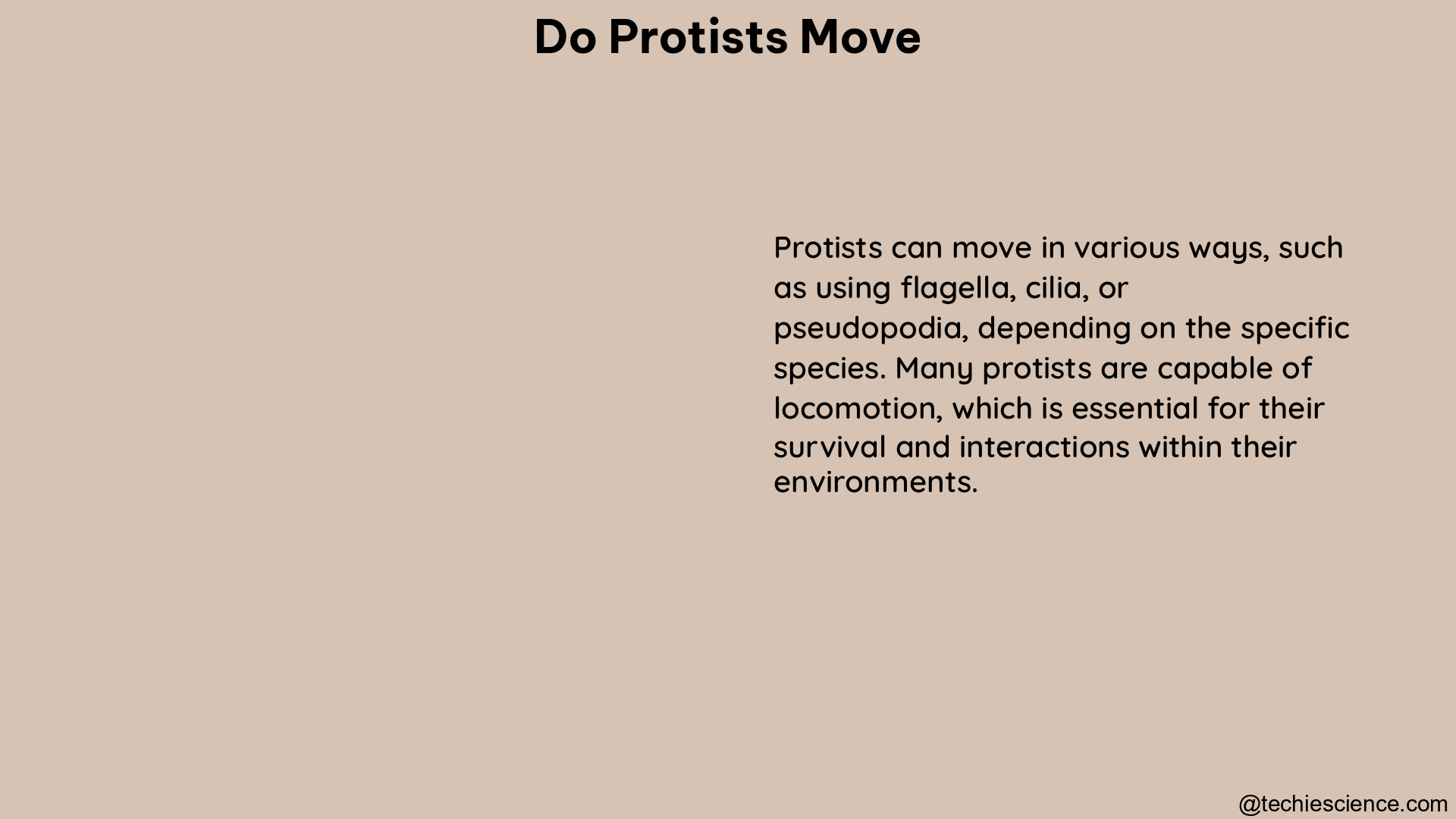Protists, a diverse group of eukaryotic organisms, exhibit a wide range of movement strategies, from amoeboid locomotion to the use of specialized organelles like flagella and cilia. Understanding the intricate mechanisms behind protist movement is crucial for gaining insights into their biology, ecology, and evolutionary adaptations.
Amoeboid Movement: The Shapeshifting Protists
Amoeboid protists, such as the well-known Amoeba proteus, are renowned for their ability to change their cell shape to facilitate movement and capture prey. This mode of locomotion is achieved through the extension of temporary cytoplasmic projections called pseudopodia. Amoeboid protists can vary significantly in size, with some reaching up to 2 millimeters in diameter, while others can be as small as 1 micrometer.
The speed of amoeboid movement also varies among different species. Some amoebae move at a rate of 0.1-0.5 micrometers per second, while others can reach speeds of up to 1 millimeter per minute. This variation in speed is influenced by factors such as the availability of nutrients, environmental conditions, and the specific adaptations of the protist species.
Flagellated Protists: Propelling through the Aquatic Realm

Flagellated protists, such as the well-known Euglena, use specialized organelles called flagella to propel themselves through their aquatic environment. Flagella are long, whip-like structures that extend from the cell surface and beat in a rhythmic manner, generating movement.
The length and thickness of flagella can vary significantly among different protist species. Some flagella measure only a few micrometers in length, while others can reach several hundred micrometers. The speed of flagellated protists also varies, with some moving at a rate of 50 micrometers per second, while others can reach speeds of up to 500 micrometers per second.
Ciliated Protists: Coordinated Cilia for Efficient Locomotion
Ciliated protists, such as the paramecium, use hundreds or even thousands of short, hair-like structures called cilia to move. These cilia beat in a coordinated manner, propelling the protist through its environment.
The size and number of cilia can vary among different protist species. Some cilia measure only a few micrometers in length, while others can reach several tens of micrometers. The beat frequency of cilia also varies, with some cilia beating at a rate of 10-20 Hz, while others can reach beat frequencies of up to 100 Hz.
Other Modes of Protist Movement
In addition to amoeboid, flagellated, and ciliated movement, some protists exhibit other modes of locomotion, such as gliding or twitching movements. These alternative movement strategies are often mediated by the secretion of extracellular matrices or the contraction of specialized fibers within the protist’s cytoplasm.
For example, some diatoms, a type of protist, can glide along surfaces using a secreted extracellular matrix. Other protists, like the euglenoids, can exhibit twitching movements through the contraction of specialized fibers called microtubules.
Factors Influencing Protist Movement
The movement of protists is influenced by a variety of factors, including:
- Environmental Conditions: Temperature, pH, and the availability of nutrients can all impact the speed and efficiency of protist movement.
- Prey Capture and Feeding: Protists may adjust their movement patterns to optimize their ability to locate and capture prey, such as bacteria or other microorganisms.
- Predator Avoidance: Protists may use their movement capabilities to evade predators, such as larger protists or small metazoans.
- Reproductive Strategies: Some protists may use their movement abilities to facilitate mating or the dispersal of reproductive cells, such as spores or gametes.
Quantifying Protist Movement
The movement of protists can be quantified in terms of various parameters, including:
- Speed: Measured in micrometers per second or millimeters per minute, the speed of protist movement can vary significantly among different species and under different environmental conditions.
- Frequency: The beat frequency of flagella or cilia, measured in Hertz (Hz), can provide insights into the efficiency and coordination of protist locomotion.
- Size: The length and thickness of flagella or the size and number of cilia can influence the overall movement capabilities of a protist.
By studying these quantifiable aspects of protist movement, researchers can gain valuable insights into the biology, ecology, and evolutionary adaptations of these diverse eukaryotic organisms.
Conclusion
Protists exhibit a remarkable diversity of movement strategies, from the amoeboid locomotion of Amoeba proteus to the coordinated ciliary beating of paramecia. Understanding the intricate mechanisms behind protist movement is crucial for unraveling the complex interplay between these organisms and their environments. By studying the speed, size, and frequency of protist movement, researchers can unlock valuable insights into the fascinating world of these microscopic eukaryotes.
References
- ScienceDirect Topics, Protista – an overview, https://www.sciencedirect.com/topics/immunology-and-microbiology/protista
- Wiley Online Library, a user’s guide for protist microcosms as a model system in ecology, https://besjournals.onlinelibrary.wiley.com/doi/full/10.1111/2041-210X.12312
- WCSPSS, Protists, https://www.wcpss.net/cms/lib/NC01911451/Centricity/Domain/3854/protist%20review.pdf
- Oxford Academic, Molecular analyses of protists in long-term observation programmes, https://academic.oup.com/plankt/article/40/5/519/5098360
- Quizlet, 21.2 Protist Structure and Function Flashcards, https://quizlet.com/288690178/212-protist-structure-and-function-flash-cards/
Hi….I am Ganeshprasad DN, completed my Ph.D. in Biochemistry from Mangalore University, I intend to use my knowledge and technical skills to further pursue research in my chosen field.